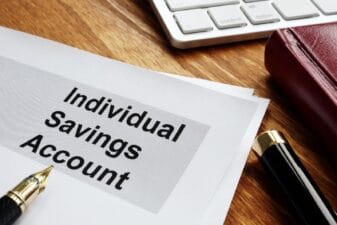Plenty of companies within the FTSE 350 have seen their valuations tumble, pushing dividend yields higher. And in cases like Ashmore (LSE:ASHM), the payout is now in double-digit territory. But is this a stellar income opportunity, or a trap? Let’s look closer at what’s going on.
Fallen from grace
The last couple of years have been tough on Ashmore shareholders. The stock has tumbled more than 70% since the pandemic hit in early 2020. And even in 2023, this downward trajectory has continued, with another 30% of its market-cap wiped out since January.
There are a lot of factors at play. However, the leading catalyst behind the falling stock price is ultimately what makes the business special in the first place.
As a quick reminder, Ashmore specialises in managing emerging market funds. The institution has built itself quite a reputation for developing winning investment strategies surrounding international stocks, corporate debt and foreign currencies. It’s proven to be a useful resource since emerging markets, while risky, contain impressive opportunities for growth.
But this hasn’t been the case of late. Global inflation, a strong US dollar, and various local problems in international markets have created a horrendous environment for an emerging market investor. China, in particular, has proven exceptionally problematic with the meltdown of its housing sector and its general economic right now.
Pairing all this with rising geopolitical tensions across Eastern Europe and the Middle East is pushing other financial institutions to cut their exposure to emerging markets. This is having a notable impact on Ashmore’s performance, with net outflows of assets under management hitting $11.5bn in the 12 months leading to June 2023. And in the latest quarter, another $2.9bn has been withdrawn by customers.
Needless to say, things aren’t looking great for this financial enterprise. But is this secretly a buying opportunity?
Investing in cyclical businesses
Emerging market investments are notoriously cyclical. A lot of momentum behind this instrument comes from Western investors, especially the US. And as economic conditions improve at home, the risks of investing abroad may prove more palatable if prices continue to drop into cheap territory.
In other words, Ashmore shares may be nearing the bottom of the cycle. And history has proven countless times that this period tends to be where the most gains are made in the long run. Of course, there’s no real way of knowing when the cycle will start to ramp back up.
What about dividends? Despite the state of its asset portfolio, Ashmore remains cash rich. As of the end of June this year, management has £764m worth of cash & equivalents on its balance sheet, which is benefiting from the higher interest rate environment.
That’s more than enough to cover last year’s dividends six times over. And it would certainly explain why management continues to maintain payouts, even in its current predicament. Pairing this with a seemingly low price-to-earnings (P/E) ratio versus its peers suggests that today’s 10% yield might be here to stay.
Having said that, the trajectory of the share price in the near term remains a mystery. And a prolonged downperiod for its business could quickly change the dividend policy. Therefore, personally, I’m not tempted to snap up some shares. But for investors comfortable with higher risk, Ashmore may be worth taking a closer look at.








